Regular maintenance of stage positioning systems requires attention to four key areas: inspection for wear, proper cleaning using isopropyl alcohol, appropriate lubrication of moving parts, and consistent calibration after adjustments. Keep your environment dust-free and temperature-stable to prevent positioning drift. Monitor feedback devices regularly and address vibration issues promptly. Choose precision-matched tools for adjustments, including digital indicators and properly calibrated torque wrenches. These practices guarantee peak performance and extend your stage’s operational lifespan.
Stage Positioning: Essential Tips for Precision Maintenance
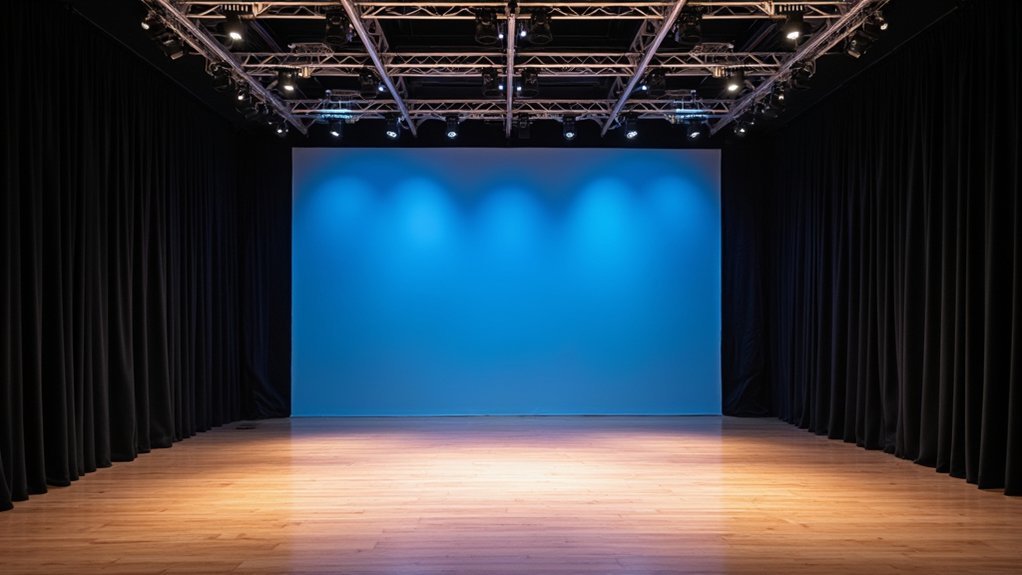
While precision instruments demand meticulous care, your manual positioning stage requires particular attention to maintain its accuracy.
Regular inspection for wear and tear guarantees smooth operation and prevents measurement errors during critical positioning tasks.
Keep your table surface clean by removing debris that can interfere with precision movements. Environmental factors like dust and contaminants directly impact performance, so establish a regular cleaning schedule.
Periodically lubricate moving parts to reduce friction and enhance operational smoothness.
After performing maintenance, always calibrate your manual positioning stage to verify it meets accuracy specifications. This calibration step is essential following any notable adjustments.
Additionally, respect load capacity limits to prevent mechanical failure that could compromise precision.
These maintenance and calibration practices will greatly extend your positioning stage’s lifespan and reliability.
Understanding Stage Positioning Mechanisms and Components
To properly maintain and operate your positioning stage, you’ll need to understand its core mechanisms and components.
Stage positioning mechanisms vary from screw drives to belt-driven systems and direct drives, each offering different precision and speed capabilities.
In manual positioning stages, components like guide rails, sliders, and adjustment screws enable smooth movement and precise control.
Your choice of guide rail—whether linear ball, crossed roller, or steel bar ball guides—will greatly impact stability and load capacity.
For enhanced accuracy, many systems incorporate feedback devices such as encoders that monitor position in real-time.
Remember that environmental factors, including temperature fluctuations and vibrations, can affect performance.
Regular inspection of these components and consideration of your operating environment will help maintain ideal positioning precision and extend your system’s lifespan.
Cleaning Protocols for Optimal Stage Performance

To keep your manual positioning stage functioning at peak performance, you’ll need a dust prevention strategy that includes covering the equipment when not in use and working in clean environments.
When selecting cleaning solvents, opt for isopropyl alcohol for metal components and avoid harsh chemicals on anodized surfaces or optical elements.
Establish a cleaning frequency schedule based on your usage patterns—weekly for high-use scenarios and monthly for occasional applications—to maintain precision and extend equipment life.
Dust Prevention Methods
Maintaining a pristine positioning stage requires diligent cleaning protocols that prevent dust accumulation and guarantee peak performance. Your high-precision manual stage deserves proactive protection through consistent dust prevention methods. Implement a cleaning schedule based on your environment’s particulate level—manufacturing floors need more frequent attention than clean labs.
| Environment Type | Cleaning Frequency | Recommended Tool |
|---|---|---|
| Manufacturing | Daily | Compressed Air |
| Laboratory | Weekly | Lint-free Cloth |
| Clean Room | Monthly | Microfiber Wipe |
| Office | Bi-weekly | Vacuum |
Always cover your positioning stage when not in use, creating a dust-free environment that extends operational lifespan. After cleaning, apply minimal lubricant to moving components, ensuring smooth operation without attracting additional contaminants. Remember that preventative maintenance is far more effective than corrective action after precision has been compromised.
Solvent Selection Guidelines
Selecting appropriate solvents for your positioning stage cleaning regimen directly impacts both performance and longevity. Material compatibility is essential—isopropyl alcohol works well for aluminum and stainless steel components, while you should avoid harsh chemicals containing strong acids, bases, or chlorine that degrade high-quality materials.
- Always perform a spot test on an inconspicuous area before applying any new solvent to your positioning stage.
- Clean regularly with lint-free cloths and apply minimal solvent to prevent residue buildup that can compromise precision.
- Adjust your cleaning frequency based on your operating environment—dustier conditions require more frequent maintenance.
- Consult your manufacturer’s guidelines for specific solvent recommendations tailored to your stage’s construction materials.
Following these solvent selection principles will help maintain peak performance and extend your positioning stage’s operational lifespan.
Cleaning Frequency Schedules
Establishing a consistent cleaning frequency schedule forms the backbone of proper stage maintenance after selecting appropriate solvents.
For standard applications, you’ll want to clean your manual positioning stages every 2-4 weeks to maintain precision positioning capabilities.
If you’re operating in high-usage environments, implement weekly cleaning routines to optimize performance and extend component life.
Always use non-abrasive, lint-free cloths with your selected cleaning solutions to protect sensitive surfaces during maintenance practices.
Pay special attention to guide rails and moving components, as these areas most quickly accumulate performance-degrading contaminants.
Increasing friction from debris buildup directly impacts positioning accuracy.
Document your cleaning frequency and procedures thoroughly to guarantee maintenance consistency across your team, supporting accountability and improving long-term operational efficiency of your precision stages.
Lubrication Techniques for Smooth Stage Movement
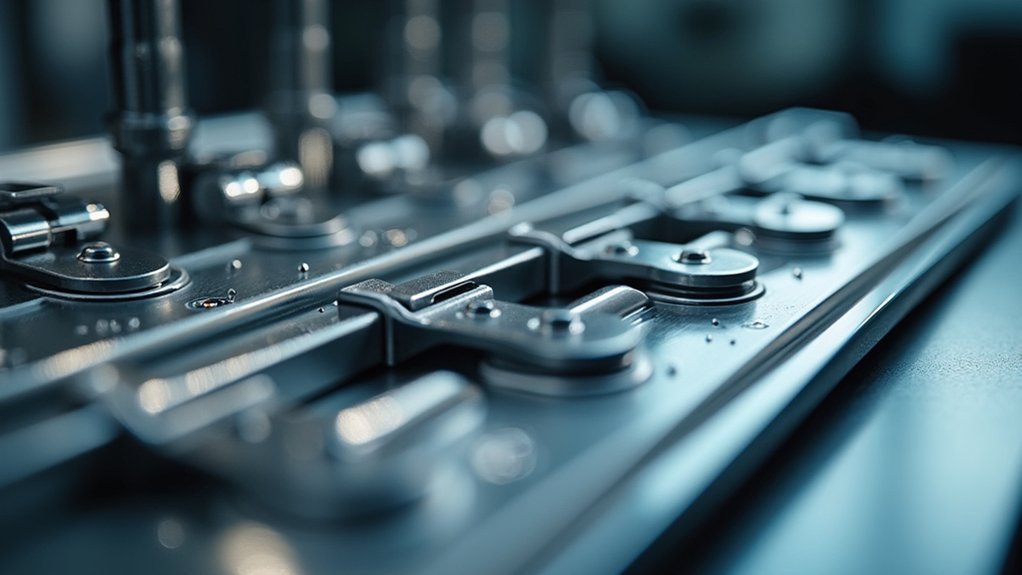
Proper lubrication serves as the foundation for reliable stage positioning performance.
Proper lubrication isn’t just maintenance—it’s the critical bedrock upon which precision positioning depends.
When maintaining your manual linear stage, you’ll need to apply high-quality lubricants formulated specifically for precision machinery. Select non-corrosive products compatible with your stage’s materials to prevent deterioration of aluminum or stainless steel components.
- Focus on contact points like guide rails and sliders, applying just enough lubricant to reduce friction without attracting debris.
- Establish a regular maintenance schedule to inspect and reapply lubrication before performance declines.
- Choose specialized greases or oils designed for precision instruments to maximize positioning accuracy.
- Remove excess lubricant immediately as it can collect dust and particles, compromising your stage’s smooth operation.
Don’t underestimate lubrication’s role in extending your positioning system’s lifespan and maintaining its accuracy.
Calibration Methods for Enhanced Accuracy
While many operators focus primarily on hardware quality, precise calibration remains the cornerstone of achieving exceptional positioning accuracy in manual stages.
You’ll need to perform calibrations regularly, especially after repairs or adjustments, to maintain micrometer or nanometer precision levels.
Use calibration standards such as gauge blocks or laser interferometers to verify accuracy and identify deviations from expected performance.
Remember that environmental factors notably impact results—maintain stable temperature conditions and minimize vibrations during the calibration process.
Implement error mapping techniques to identify systematic errors and develop appropriate compensation strategies.
This methodical approach lets you detect subtle positioning irregularities that might otherwise compromise your work’s precision.
Detecting and Resolving Stage Drift Issues
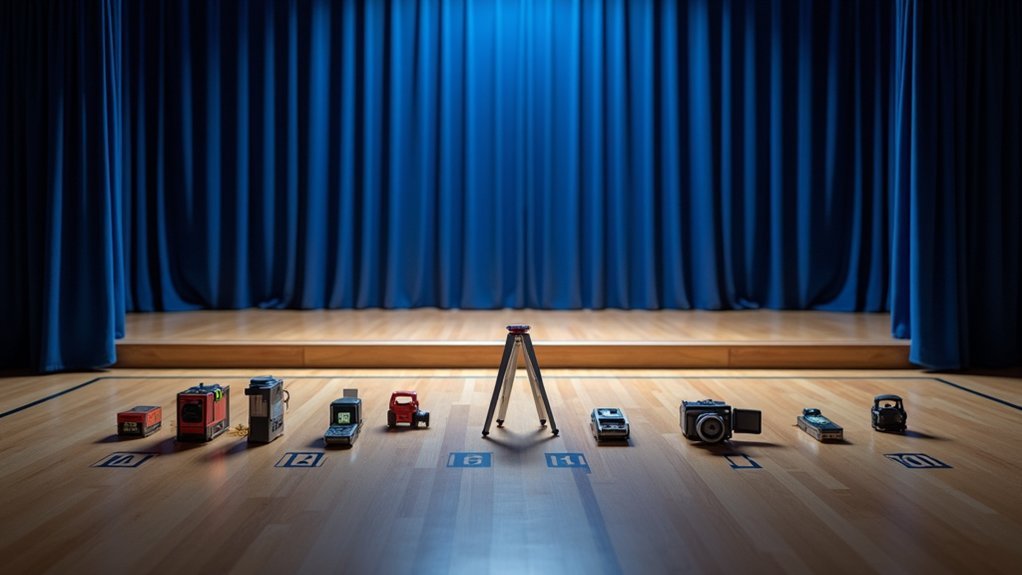
Stage drift can be identified using real-time position monitoring with encoders and regular comparison of measured versus commanded positions.
You’ll need to implement temperature compensation algorithms and thermally stable materials to counteract drift caused by thermal expansion.
Establish a consistent calibration schedule that includes drift checks at various operating temperatures to maintain positioning accuracy and prevent cumulative errors from affecting your stage performance.
Drift Measurement Techniques
Detecting unwanted movement in your positioning system requires precise measurement techniques and consistent monitoring.
You’ll need to implement regular calibration procedures to identify drift early and maintain accuracy in your positioning stages. When measuring drift, consider the environmental factors that can affect your readings—temperature fluctuations and vibrations often contribute considerably to positional changes.
- Use laser interferometers to measure displacement with micrometer precision
- Install feedback systems with encoders to track position changes in real-time
- Maintain a log of drift measurements to identify patterns and predict future issues
- Conduct measurements under various controlled conditions to isolate environmental influences
Temperature Compensation Methods
Because temperature fluctuations greatly impact positioning accuracy, implementing effective compensation methods is essential for maintaining precision in your stage setup.
Select materials with low thermal expansion coefficients, such as specific aluminum alloys or stainless steel, to minimize drift caused by temperature variations.
Install thermal compensation systems that use temperature sensors to actively adjust positioning in real-time. These systems detect environmental conditions and make micro-adjustments to counteract expansion or contraction effects.
You’ll need to perform regular calibration, especially after significant temperature changes, to maintain ideal performance.
Consider adding insulation or climate control systems to your lab environment. Stabilizing the ambient temperature reduces the burden on compensation systems and improves long-term positioning reliability.
Even small temperature variations can cause meaningful drift in high-precision applications.
Regular Calibration Protocol
To maintain ideal positioning accuracy over time, you’ll need to establish a consistent calibration routine for your stage systems. Regular calibration prevents drift issues that can compromise your positioning precision. Schedule checks at least every six months or after periods of heavy usage to guarantee your equipment performs reliably.
- Use precision measurement tools like laser interferometers or micrometers to assess positional accuracy.
- Document all calibration results and adjustments to track drift patterns over time.
- Apply error compensation techniques through software adjustments or mechanical modifications.
- Perform preventive maintenance including cleaning and lubricating moving components.
These practices will help you detect potential issues early and maintain the accuracy of your manual positioning stages.
Remember that consistent maintenance creates a foundation for reliable performance, ultimately saving you time and resources in your precision applications.
Preventing Cross-Contamination During Maintenance
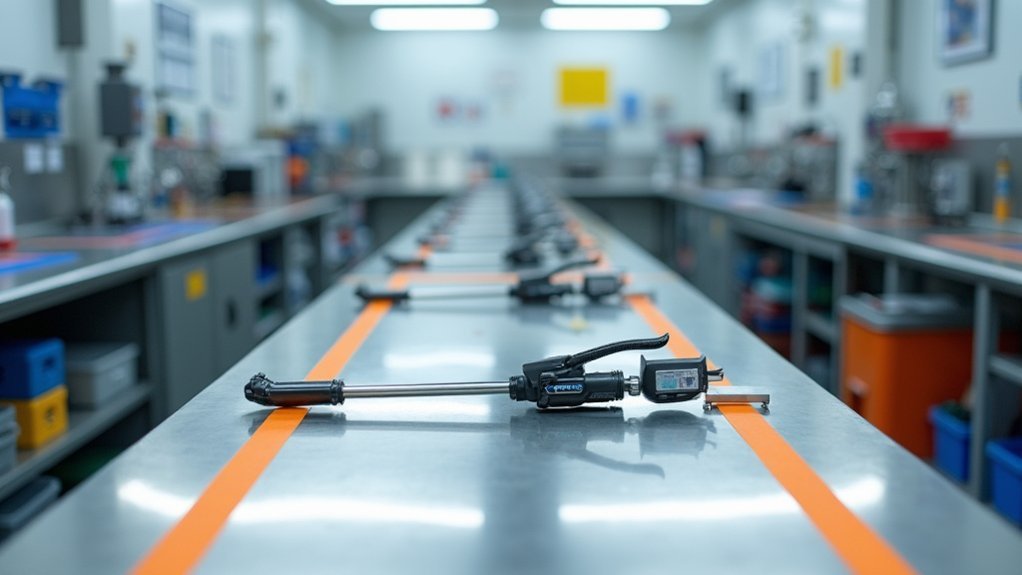
When performing maintenance on precision positioning stages, maintaining cleanliness isn’t just good practice—it’s crucial for operational integrity.
Always use lint-free cloths and designated cleaning solutions to wipe down your stages, preventing contaminants from being introduced through improper materials.
Establish a dedicated maintenance area that minimizes exposure to environmental dust and debris. This controlled space should include anti-static mats and grounded wrist straps when you’re working with electronic components.
Remember to follow strict protocols for tool usage—only use designated tools to avoid transferring residue between systems.
Regular inspection of seals and covers is equally important; replace any that show signs of wear to guarantee they effectively shield your positioning stages from dust infiltration during maintenance procedures.
Managing Thermal Expansion in Positioning Systems
Thermal expansion represents one of the most notable challenges in maintaining positioning accuracy, since even slight temperature fluctuations can cause dimensional changes that compromise precision.
You’ll need to implement specific strategies to counteract these effects, especially when metals in your positioning systems can expand 10-30 µm per meter with each degree of temperature change.
- Conduct regular calibration procedures to account for dimensional shifts—even a minor 0.1 mm deviation can notably impact precision tasks.
- Choose materials like Invar with its low 1.2 µm/m°C expansion coefficient for critical components.
- Implement temperature compensation features, including built-in thermal sensors that automatically adjust positioning.
- Install thermal insulation or maintain controlled environmental conditions to minimize temperature fluctuations.
Troubleshooting Common Stage Movement Problems
While managing thermal expansion helps maintain accuracy, even the best-designed positioning systems will eventually encounter operational issues. Regular maintenance prevents small problems from becoming major failures. You’ll need to monitor your stage for warning signs like unusual noises, which often indicate misalignment or damage requiring immediate attention.
| Problem | Troubleshooting Action |
|---|---|
| Erratic movement | Check for worn bearings and screws |
| Positioning drift | Monitor environmental vibrations |
| Reduced precision | Calibrate system periodically |
| Rough operation | Clean guide rails and surfaces |
Don’t ignore subtle changes in your positioning stage’s performance. Debris on rails can impede smooth movement, while unaddressed mechanical wear leads to inaccuracies. Implement a regular calibration schedule to compensate for environmental shifts and usage patterns that affect precision over time.
Tool Selection for Precision Stage Adjustments
When selecting calibration tools for your positioning stage, you’ll need to match measurement precision to your application requirements. Digital indicators offer quick readings while mechanical dial gauges provide reliability without power.
Your torque wrench selection should prioritize models with accuracy ratings of ±3-5% or better, ensuring consistent force application across all fasteners without risking damage to delicate components.
Remember to choose torque wrenches with appropriate range limits rather than consistently operating at the extreme ends of the tool’s capacity, as this maintains calibration accuracy and extends the life of both your tools and stage mechanisms.
Calibration Tools Guide
Selecting the right calibration tools represents a critical step in achieving precision stage adjustments that meet your technical specifications.
When maintaining high accuracy in your positioning stages, you’ll need reliable measurement instruments that verify performance within specified tolerances.
For effective precision maintenance of your positioning equipment, consider these essential calibration tools:
- Micrometers and dial indicators for direct contact measurement of displacement
- Laser interferometers when you need non-contact measurement with sub-micrometer accuracy
- Digital readouts and encoders to provide real-time position feedback, enhancing repeatability
- Calibration standards such as gauge blocks to verify measurement integrity
Don’t underestimate the value of implementing a regular maintenance schedule that includes these calibration tools.
You’ll greatly reduce precision drift and extend your positioning stage’s operational lifespan.
Torque Wrench Selection
The right torque wrench serves as a critical foundation for precise stage positioning work. When making your selection, focus on finding a tool with a measurement range that matches your application’s requirements—typically between 5-100 Nm for positioning stages.
For precision stage adjustments, choose a click-type torque wrench that provides both audible and tactile feedback, preventing over-tightening that could damage components. Guarantee calibration accuracy of ±4% or better to maintain stage performance in sensitive applications.
Invest in durable materials like chrome vanadium steel for longevity and consistent performance during frequent use.
Remember to recalibrate your wrench every 6-12 months according to manufacturer specifications to maintain accuracy.
With the proper torque wrench selection, you’ll achieve reliable, precise adjustments that extend your positioning stage’s lifespan.
Extending the Lifespan of Mechanical Stage Components
Proper maintenance of your positioning stage components directly impacts their longevity and precision performance over time. Regular inspection for wear and tear guarantees smooth operation while preventing costly failures.
You’ll need to apply manufacturer-recommended lubrication to reduce friction and extend component life.
- Keep your work environment clean—dust and debris are precision’s worst enemies
- Schedule routine maintenance checks to calibrate and prevent misalignments
- Apply appropriate lubrication to moving parts per manufacturer guidelines
- Use protective covers to shield against environmental factors like humidity
Don’t underestimate how environmental factors affect your positioning system’s precision. Temperature fluctuations and humidity can compromise material integrity, while contaminants interfere with mechanical accuracy.
Implementing these maintenance practices won’t just extend component lifespan—it’ll maintain the positioning precision your applications demand.
Environmental Factors Affecting Stage Positioning Precision
While often overlooked, environmental conditions play a critical role in determining the accuracy of manual positioning stages. Temperature fluctuations cause materials to expand or contract, directly impacting dimensional stability and positioning precision.
You’ll find that vibrations from nearby machinery can disrupt your stage’s stability, introducing unwanted movement and positioning errors. Similarly, humidity levels contribute to potential corrosion, especially in aluminum components, degrading performance over time.
Don’t underestimate the impact of dust accumulation on guide rails—even small particles can impede smooth motion and compromise accuracy. Magnetic fields from surrounding equipment may interfere with measurement devices, further reducing positioning reliability.
To maintain ideal precision, you should monitor and control these environmental factors through proper shielding, regular cleaning, and climate control where possible.
Frequently Asked Questions
When Should I Replace Rather Than Repair a Positioning Stage?
Replace your positioning stage when repair costs exceed 50% of replacement value, when parts are obsolete, when precision requirements increase, or when downtime costs outweigh the investment in new equipment.
How Do Wireless Connectivity Options Impact Positioning System Maintenance?
Wireless connectivity enables remote monitoring of your positioning systems, allowing you to diagnose issues without physical access. You’ll enjoy predictive maintenance benefits, fewer on-site visits, and real-time alerts when tolerances drift beyond specifications.
Can Different Measurement Units Affect Calibration Accuracy?
Yes, you’ll experience calibration errors if you’re using mixed measurement units. Always maintain consistency between imperial and metric systems throughout your positioning workflow to avoid accuracy drift and compounding conversion errors.
What Safety Certifications Are Crucial for High-Precision Positioning Stages?
You’ll need CE, UL, ISO 9001, SEMI S2, and RoHS certifications for high-precision positioning stages. They’re essential for ensuring operator safety, electromagnetic compatibility, and compliance with international safety standards in your facility.
How Do Vibration Isolation Techniques Enhance Stage Positioning Precision?
Vibration isolation techniques enhance your positioning precision by eliminating external disturbances. You’ll achieve better repeatability when you use air tables, passive dampeners, or active cancellation systems to shield your stages from environmental vibrations.
In Summary
Maintain your stage positioning with these essential practices, and you’ll extend the life of your equipment while ensuring peak performance. Remember, it’s not just about following maintenance schedules—it’s about understanding how your particular system works. When you’re attentive to cleaning, lubrication, calibration, and environmental factors, you’re protecting your investment and guaranteeing precision when it matters most.

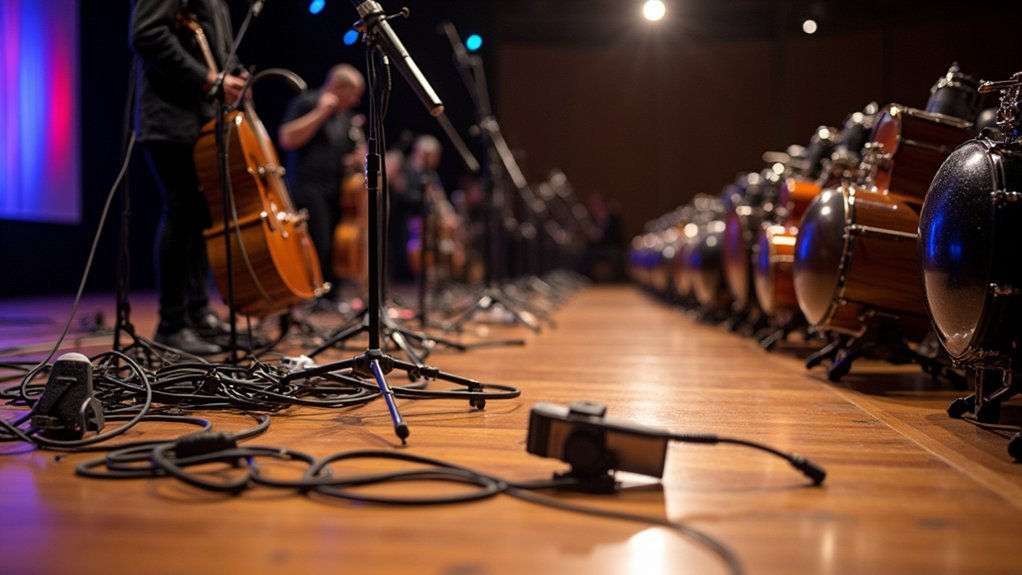



Leave a Reply